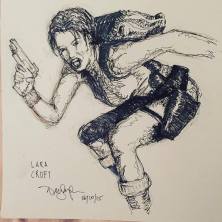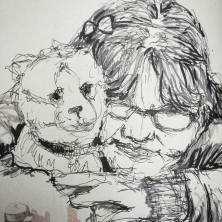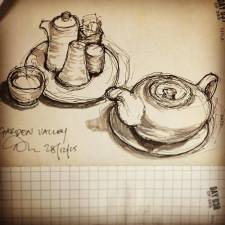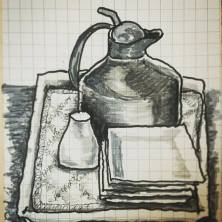The news that greeted Malaysia last week on the resignation of Tan Sri Azman Mokhtar and the whole board of Khazanah sent shockwaves throughout the whole country. An even deeper sadness permeated throughout the Khazanah fraternity including its alumni of which I am part when it was confirmed that Tan Sri Azman’s last day was to be 31st July 2018. Many got to physically be at the base of Tower 2 KLCC and to say goodbye in person but unfortunately, I was not among them having moved to Iskandar Puteri, Johor to ply my trade with Iskandar Investment Berhad, a subsidiary of Khazanah. The social media was awash with tributes and accolades, singing praises of his accomplishments and his character, exemplary to all and sundry. My humble contribution to that tide is customarily late, although what I would like to share is my experience with him as a person, a wonderful human being.
My first contact with Tan Sri was when I was roped in as a consultant to the Transformation Management Office (TMO), Khazanah by my former colleague in iPerintis, Reez Nordin in 2006. One of the 10 ‘Coloured Books’ of the GLC Transformation Programme was the establishment of an academy to enhance the skills of GLC Directors; this initiative was closely tied to another called the Green Book: Enhancing Board Effectiveness. I was brought in to assist in setting up the academy, on the back of having set up an education-based company for Petronas some years earlier. After diving into the project to understand the scope of work and deliverables, I was asked to come up with the whole implementation strategy within 2 weeks, working together with the existing team. Two weeks came and went rather speedily, and it was time to table the plan to Tan Sri (then Dato and called DMD for Datuk Managing Director).
With some trepidation, I walked into DMD’s meeting room, which felt a tad too cold (it was later suggested to me that this was done on purpose, a kind of psychological mind-game tactic, whose authenticity I never got to fully verify). His presence filled the entire room, and one faced a regal silhouetted figure across an Arthurian round table. Little did I know that the seat I took was the hot seat which those familiar with the room avoided, is it was a direct line of sight to the room’s Master. Ignorance is bliss, they say, and unperturbed, I went about presenting my plans with a little swagger, needing to justify my position as a consultant worthy of the appointment.
DMD sat through the presentation thoughtfully, asking leading questions intermittently. He gave a rather long leash for explanations with undivided attention. After a couple of sessions like these, just after I presented the need to set up a company limited by guarantee, he just said ‘Proceed. You now take over the project and you will be a Director of the company.’ and left. It was explained a few minutes later by my supervisor Aini and the HR Head Azman that in those few words, it meant that I would have to a full-time employee of Khazanah, no longer a consultant in order to set up the company as a first director. Brevity with consequences! And this my journey as an employee with Khazanah really began.
One thing that really stayed with me was that he gave you his full attention to the matter on hand, no matter what position in the company you held. For that moment, you mattered. You were no longer a speck, but a mountain worthy of attention, at that moment. But this was true not only in matters involving work; there were numerous times this proved true in more casual circumstances. At the first annual dinner, a scratch team of Affan, Angela, Dr Farid and I performed a magic show having practised only a few hours earlier. I was inexplicably named the best-dressed male of the night and after it was all officially over, he and his wife came over to me and my wife when we were sat way at the back for a chat, seemingly impressed with the repertoire shown. During the first Raya open house at his PJ home, he personally took my family and me on a tour, knowing that I was an architect and therefore showing all the clever space-saving and elegant solutions implemented there. On many occasions he would single me and my family out, and meaningfully chat with us – oh, us gnats, wallflowers in the background but somehow worthy of attention. I even had the pleasure of working solely with him on a project in Iskandar Malaysia, often seeing him after Maghrib to debate and get decisions. His thinking and thoughtfulness never failed to amaze and inspire.
Thus was my humble interaction with this great man. Those moments, few but meaningful, shall be cherished forever. A spec to mountain, momentarily, eternally.
May his path be blessed always.






 ability to zoom in and zoom out by pinching makes it so much more efficient. If you want to do this, I advise converting the PPT to PDF using Microsoft Powerpoint on the MacBook – when I converted an emailed file using PDF Convertor app (also by Readdle, the same team who brought to you PDF Expert) on the iPad, the result was less than stellar – too many native PPT boxes and text either got skewed or disappeared altogether.
ability to zoom in and zoom out by pinching makes it so much more efficient. If you want to do this, I advise converting the PPT to PDF using Microsoft Powerpoint on the MacBook – when I converted an emailed file using PDF Convertor app (also by Readdle, the same team who brought to you PDF Expert) on the iPad, the result was less than stellar – too many native PPT boxes and text either got skewed or disappeared altogether.


























 The set comprises felt nibs in sizes XS (very thin, good for detailing), S (best for drawing), F (good for outlines and emphasis) and B (brush nib which I have never used before and wanted to try). The featured image at the top of this post are depict the four pens and their line weights. I also purchased a Rotring Clutch pencil with a built-in sharpener (at the top of the cap).
The set comprises felt nibs in sizes XS (very thin, good for detailing), S (best for drawing), F (good for outlines and emphasis) and B (brush nib which I have never used before and wanted to try). The featured image at the top of this post are depict the four pens and their line weights. I also purchased a Rotring Clutch pencil with a built-in sharpener (at the top of the cap).











 So I had more tools at my disposal, but needed more guidance. In order to ensure I do not stray from the original intent of producing comics, I was looking for books that would help me sketch better, and ink better. God’s grace certainly shone through that day when I was rummaging through MPH at One Utama and came across 2 books that fit both criteria. The first being James Hobb’s “Sketch your World: Essential Techniques for Drawing on Location”, a guide that looks at various techniques and methods for drawing on-the-go, an imperative skill that I need to acquire if I were ever to rediscover and further develop my drawing chops. It even intersperses the chapters with profiles of featured artists, delving a little deeper on their particular methods. Heartily recommended, this book got a 4.5 stars rating on Amazon, and 5/5 at Barnes & Noble!
So I had more tools at my disposal, but needed more guidance. In order to ensure I do not stray from the original intent of producing comics, I was looking for books that would help me sketch better, and ink better. God’s grace certainly shone through that day when I was rummaging through MPH at One Utama and came across 2 books that fit both criteria. The first being James Hobb’s “Sketch your World: Essential Techniques for Drawing on Location”, a guide that looks at various techniques and methods for drawing on-the-go, an imperative skill that I need to acquire if I were ever to rediscover and further develop my drawing chops. It even intersperses the chapters with profiles of featured artists, delving a little deeper on their particular methods. Heartily recommended, this book got a 4.5 stars rating on Amazon, and 5/5 at Barnes & Noble! The other delightful find was John Paul Lowe’s “Foundations in Comic Book Art”. While not strictly a ‘how-to’ book nor is it a history of sequential art, this book manages to find an amazing balance of method and meaning, whilst using his own artwork as well as those from Savannah College of Art and Design (SCAD) where he has been teaching for over 20 years. Whilst the composition and construction of objects may seem a tad overblown (although useful or those really starting with basics), his exposition on inking (hurray!) is extensive and instructive for a neophyte like moi. Touche! interestingly, this book also received the same ratings as the above!
The other delightful find was John Paul Lowe’s “Foundations in Comic Book Art”. While not strictly a ‘how-to’ book nor is it a history of sequential art, this book manages to find an amazing balance of method and meaning, whilst using his own artwork as well as those from Savannah College of Art and Design (SCAD) where he has been teaching for over 20 years. Whilst the composition and construction of objects may seem a tad overblown (although useful or those really starting with basics), his exposition on inking (hurray!) is extensive and instructive for a neophyte like moi. Touche! interestingly, this book also received the same ratings as the above!